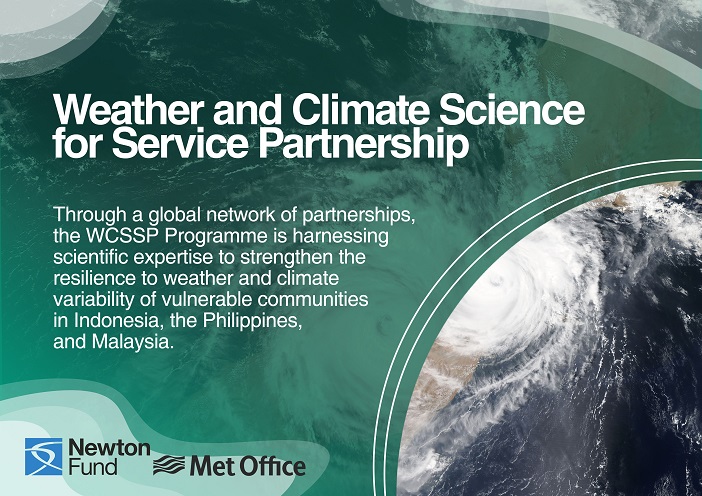As a Brit abroad, it’s still my go-to conversation starter when I call my colleagues in other countries in the region. There’s a misconception that the weather at the equator is the same most of the year round, but this is far from the truth! The islands of Southeast Asia (known to meteorologists as the Maritime Continent) reflect the unique influences of land and sea on the region’s weather and climate, and experience some of the most dramatic impacts of extreme weather.
In 2013, Typhoon Haiyan struck the central Philippines and made global headlines. It was one of the strongest tropical cyclones ever recorded, prompting huge damage and loss of life. The British Government and public contributed £96 million to help the people of the Philippines rebuild. Countries in Southeast Asia experience a wide range of other extreme events, including flooding, landslides and sea surges.
We can’t control the weather…
We may not be able to control the weather, but understanding more about the science behind it helps us to prepare better and do a better job of managing the risks. By understanding the science behind high impact weather events, there is the opportunity to plan development to be more resilient to extreme weather; to get better prediction and warning systems in place; and to respond more effectively when this weather strikes.
To do this, the Met Office, the UK’s national meteorological service, through the UK Government’s Newton Fund, is partnering with counterparts from Malaysia, Indonesia and the Philippines. Together they are working on a project called the Weather and Climate Science for Service Partnership (WCSSP) Southeast Asia. The project was launched with Malaysia and the Philippines in July 2017; Indonesia officially joined last week. The WCSSP Southeast Asia project is supported jointly by all four countries involved in the work and is part of a developing global network of partnerships within the Weather and Climate Science for Service Partnership Programme.
But we can do a better job of understanding and predicting it…..
The project aims to:
- Improve the understanding of the impact of large scale atmospheric processes on the weather and climate of Southeast Asia
- Assess, develop and improve convective scale models (local fine scale models) in order to make better forecasts of high impact weather over Southeast Asia
- Improve the processes which translate weather forecast models into advice that can help mitigate against high impact weather at a range of lead-times from hours to months
- Ensure that the requirements of the users of weather forecasts influence the science carried out, so that advances of weather forecasts meet the needs of the users. The science has to be useful and in a form that decision makers can use
Research crosses borders
Last week, scientists and meteorologists from all four countries involved in the programme met in Jakarta, Indonesia, to discuss common scientific and forecasting challenges and to share information. It was striking to hear the depth of experience and local knowledge from each country. Pooling this shared know-how and working to develop new knowledge gives us an amazing opportunity to build our collective understanding of the atmospheric patterns, processes and weather events that affect SE Asia, and support improvements to models and forecasts. We hope this research can lead to changes in the way we plan for and respond to extreme weather, bringing tangible benefits for the people living in Southeast Asia.
Over the next few years there will be similar events in Malaysia and the Philippines where researchers will continue to share best practise, exchange knowledge and work towards common forecasting challenges. In the meantime, old conversational habits die hard. I still expect my phone calls with colleagues around the region to start with “Thunder today in Kuala Lumpur?” and “Nice day in Manila?”.

